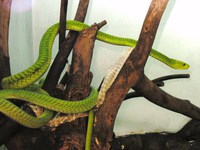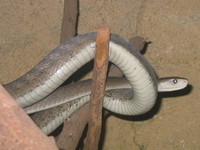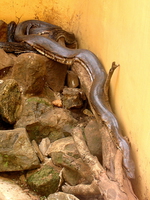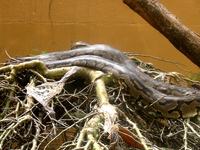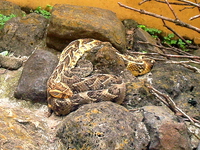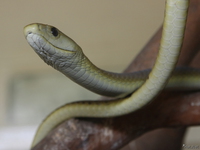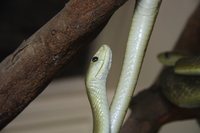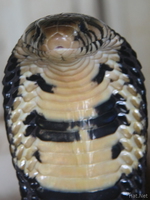snakes of kenya
Africa's most feared snake the Black Mamba is the largest venomous snake in Africa, and is considered to be one of the world's fastest. Mambas have been described as aggressive, although there is little hard evidence of this. Most mambas if approached, move away or freeze, hoping to remain unseen. However, it will bite if threatened.
Largest snake in Africa Rock pythons can eat adult impala or gazelles, which will last them 3 to 6 months without need for feeding. wonder where they get the gazelles in the park to feed them.
Python sebae is a non-venomous python species found in subsaharan Africa. One of the world's largest species of snakes.
With adults reaching lengths of over 6 m (20 feet), this is one of the world's largest species of snakes.
They are typically brown in color, with olive green and tan irregular blotching, fading to white on the underside. At a glance they can be easily mistaken for the Burmese python, P. molurus, but the two species are not closely related.
Bitis Arietans The most dangerous snake in Africa The puff adder causes he majoriy of snake bite in Africa. This is because of its wide distribution, habit of basking along footpaths and oxic verono
Spitting cobra refers to any one of several species of cobras that have the ability to spit or eject venom from their mouth when defending themselves against predators. The spit venom is harmless to intact skin. However, it can cause permanent blindness if introduced to the eye and left untreated (causing chemosis and corneal swelling).
Despite their name, these snakes do not actually spit their venom. They rather spray the venom, using muscular contractions upon the venom glands. The muscles squeeze the glands and force the venom out the forward facing holes at the tip of the fang. At the same time that the venom leaves the fang tip, a large gust of air is expelled from the lung which aerosolizes the venom and propels it forward. When cornered, some species can "spit" their venom up to a distance of two meters. While spitting is typically their primary form of defense, all spitting cobras are also capable of delivering venom through a bite as well. Most species' venom exhibit significant hemotoxic effects, along with more typical neurotoxic effects of other cobra species.
Africa's most feared snake the Black Mamba is the largest venomous snake in Africa, and is considered to be one of the world's fastest. Mambas have been described as aggressive, although there is little hard evidence of this. Most mambas if approached, move away or freeze, hoping to remain unseen. However, it will bite if threatened.
dendroaspis polyepis The Black Mamba is one of the deadliest snakes in the world. A single bite may inject enough venom to kill from 20-40 grown men, easily killing one unless the appropriate anti-venom is administered in time. When cornered, they will readily attack. In fact, many snake experts have cited the black mamba as the world's most aggressive snake, noting a tendency to actively attack without provocation. When in the striking position, the mamba flattens its neck, hisses very loudly and displays its inky black mouth and deadly fangs. It can rear up around one-third of its body from the ground which allows it to reach heights of approximately four feet (1.21 meters). When warding off a threat, the black mamba usually delivers multiple strikes, injecting its potent neuro- and cardiotoxin with each strike, often attacking the body or head, unlike most other snakes.
If left undisturbed, Black Mambas tend to live in their lairs for long periods of time, which are often vacated insect mounds or hollow trees. Black mambas are diurnal snakes that hunt prey actively day or night. When hunting small animals, the Black Mamba delivers a single deadly bite and backs off, waiting for the neurotoxin in its venom to paralyze the prey. When killing a bird, however, the Black Mamba will cling to its prey, preventing it from flying away.

